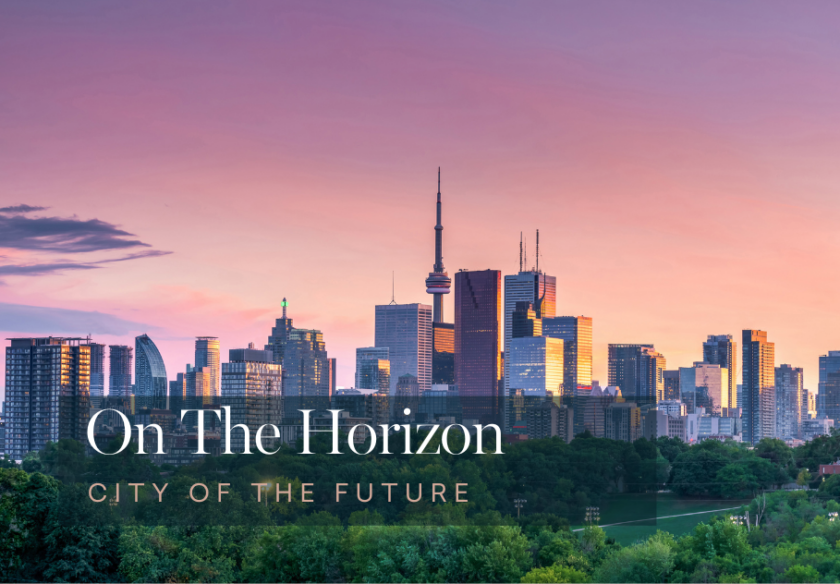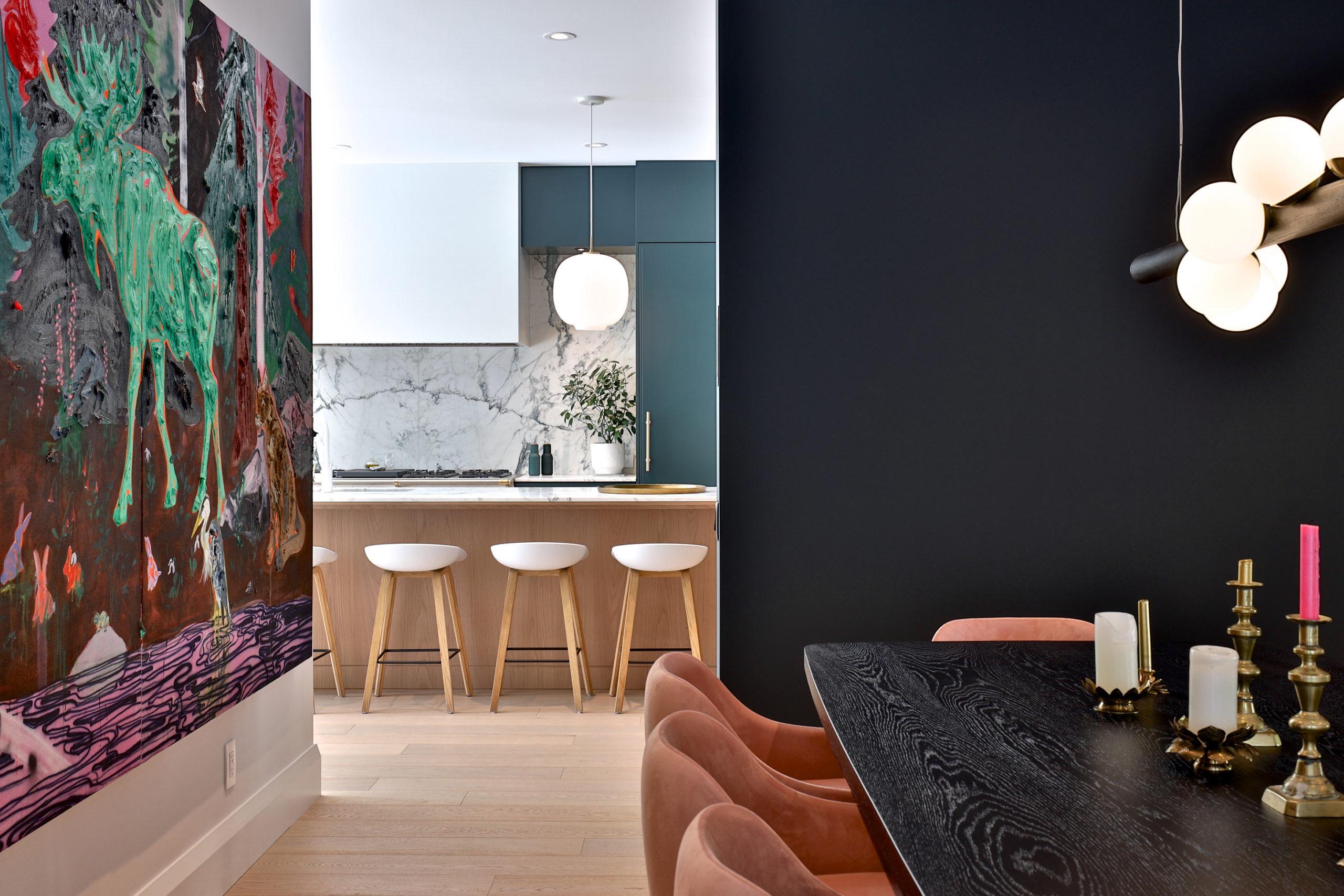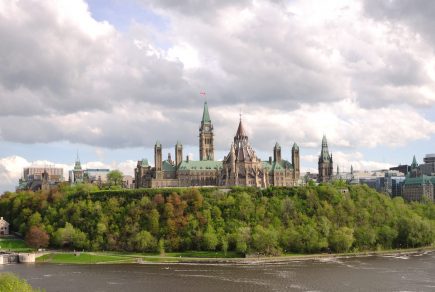
Asking what Toronto will be like in the future helps us understand what decisions may need to be made today. Will the Big Smoke continue its breakneck growth and rival megacities like New York and London, or will it stall under the weight of creaking infrastructure? Will Toronto’s streets be filled with flying cars zipping around on clean energy or will the city still be tackling gridlock in another 50 years?
It’s impossible to answer those questions with any kind of certainty. (Well, flying cars probably won’t happen.) But like many urban centres around the world, experts say Toronto’s future will be shaped by a confluence of trends, from climate change to surging urbanization. Here are some educated guesses about how those developments could play out.
POPULATION GROWTH WILL CONTINUE
According to estimates from the provincial government, by 2046 the population of the Greater Toronto Area could hit 10 million, a more than 40 percent jump from today. About 1 million more people will likely pack into Toronto proper, a surge that would be unprecedented in its history. Many of those new arrivals will be from outside of Canada. Up to 255,000 immigrants could be settling in Ontario annually by 2046, according to data from Statistics Canada and the Ministry of Finance, with many putting down roots in the Greater Toronto Area. Onlookers say the population surge will present provincial and municipal officials with two options: allow the Greater Toronto Area to continue to sprawl or invest heavily in infrastructure, like public transit, that supports denser development.
DENSITY WILL INCREASE
Most of Toronto’s growth will come in a few already bustling areas, according to the city’s master plan. Downtown will continue to be the main area for new construction. But planners will also nudge developers towards areas like Yonge and Eglinton, North York Centre, Scarborough City Centre and Islington City Centre West. Officials envision these becoming business as well as residential hubs, taking pressure off an increasingly dense downtown. They will likely be joined by the Port Lands, a 356-hectare industrial zone east of downtown. One of the most valuable underused pieces of real estate in North America, officials have launched a $1.25 billion construction blitz here that could pave the way for a mixed-use neighbourhood with thousands of homes. Crews are building bridges, decontaminating land and creating a new outlet for the flood-prone Don River, with work scheduled to finish in 2024. The area is also slated to become home to a combined streetcar subway-GO station, though city planners reportedly don’t expect any housing to be built before 2030.
GROWTH AND PRESERVATION WILL NEED TO BE BALANCED
Increasing the density of secondary centres is considered good news for a city that’s trying to find solutions for more affordable housing. Toronto’s master plan says most neighbourhoods—including those dominated by single-family homes—will “mature and evolve”, without seeing any radical changes. Those areas, along with parks and waterways, cover 75 percent of the city. The downside to that status quo is that it may not leave Toronto with enough land to diversify its housing options with new apartment blocks and multi-family residences—which will be needed if the population growth proceeds as predicted. When it comes to residential planning, “We have to act now to ensure affordability,” says Nikolas Badminton, a Toronto-based futurist who has worked with leadership at NASA and the United Nations on emerging issues. As for retail planning, Badminton notes that we need to take measures to ensure that gentrification and the growing reach of corporate retailers don’t drain the city of the character that makes it special. “We need to preserve the established culture and bring people in from all walks of life. (If not) we face a probability of homogeneous, unfriendly neighbours and stores that lack the independent energy of the city.”
PUBLIC TRANSIT WILL EXPAND
Toronto has only opened two subway lines since 1978: the six-stop Scarborough LRT and the five-stop Sheppard line. (It has expanded existing lines, including Line 1 into Vaughan.) But in the coming decades, the city could see a bevy of new rail lines. The oft-delayed Eglinton Crosstown LRT, which was expected to open in 2022, will eventually span 25 kilometres of Midtown Toronto. The Finch West LRT, slated to open this year, will feature 18 stops between Keele St. and Humber College. Then there’s a $28.5 billion subway expansion that has been called the most ambitious in Toronto’s history. Spearheaded by the provincial government, it would see the Bloor-Danforth line push deeper into Scarborough with long-term plans to connect it to the Sheppard subway. The Yonge-University line would be extended north into Richmond Hill. And a new, winding, 15-station line would connect the Ontario Science Centre to Exhibition Place, running partially along Queen Street. That has been dubbed the Ontario Line. Backers say once those projects are completed they will give the city the far-reaching, interconnected subway and light rail system it has long needed. But critics have wondered whether the province can deliver in time to accommodate the influx of new Torontonians expected in the coming years. Since Premier Doug Ford announced the Ontario Line in 2019, its opening has been pushed back four years to 2031 and its price tag has nearly doubled, according to reports.
CARS WILL STAY PARKED AT HOME
To keep streets moving and to combat gridlock, the city’s master plan will discourage driving, especially in the downtown core. Major thoroughfares will be redesigned to give priority to streetcars, cyclists and pedestrians. Officials expect more streets to begin to look like the Danforth and the stretch of Yonge between Bloor and Davisville, where half the roadway has been replaced with a bike lane and restaurant patios. That could ultimately make Toronto a much nicer place to live for the millions who call the city home, according to Badminton. “We should focus on street-level services and places for people to congregate,” he adds.
THE WEATHER WILL GET A BIT WILDER
In the years to come, Toronto will likely become hotter and wetter, with one study predicting it will feel like Washington, D.C. by 2050. The changes could unfortunately leave the city more prone to flash floods, heatwaves, ice storms and tornadoes. Which in turn could have a negative effect on worker productivity and impact critical infrastructure. “Whatever Toronto is in 2050, it’s going to be a much harsher environment,” says Sanjay Khanna, a Toronto-based futurist and corporate consultant. “[We’ll require] an attitudinal shift as we face tougher conditions and we’ll need to find a way to be more altruistic.”
THE LANDSCAPE WILL LOOK SIMILAR
Many experts think that, ultimately, the Toronto of the near future won’t look all that different. The downtown core will have more skyscrapers. The expanding public transit network will create more secondary hubs. And warming temperatures may change the nature of the city’s natural spaces. But the Jetsonian future of flying cars and police robots probably isn’t in the cards, laughs Badminton. “Toronto itself will not look and function so differently. We’re not going to tear down sections of the city.” He hopes Toronto can continue to build on the culture, street life and sense of community that makes it so unique. “For me, the potential is the people. As we grow we need to connect more and ignite collaborative programs to keep lifting the city up.” Although a major transformation isn’t expected, climate change will have some influence over the design of Toronto’s homes. City officials are aiming to slash planet-warming greenhouse gas emissions from existing buildings by 80 percent and make all new construction “near-zero” in terms of emissions. To that end, we are already seeing some government grants available for those looking to make energy-efficiency upgrades to their homes. In the years ahead, we could see a scenario when Toronto’s homes will be adapted for the hotter, wetter weather that’s in our future, says Khanna. This could mean rooftops are dotted with solar panels, smart thermostats are commonplace and towering trees line many blocks, shielding homes from the sun and reducing the need for air-conditioning. A greener, more sustainable city requires innovation, creative solutions and planning. All positive changes that we can’t wait to see in the coming years.

WORDS BY ANDREW RAVEN


